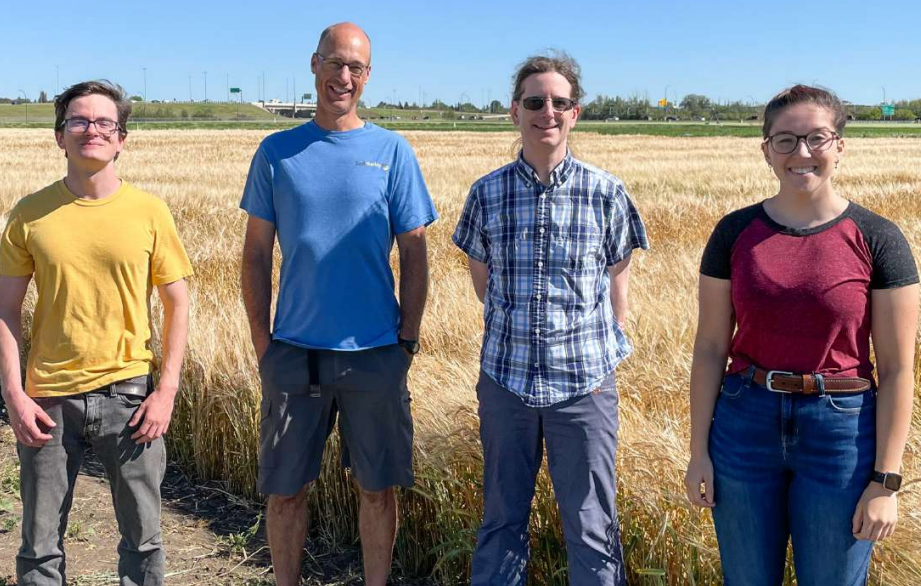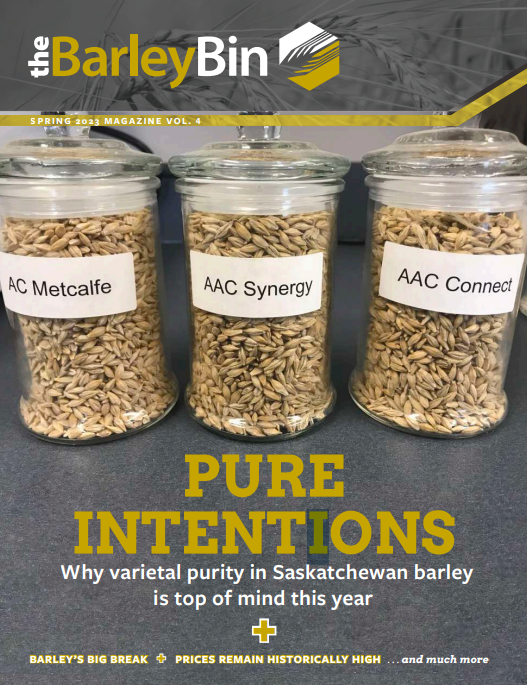Rooting Out the Lodging Problem
When it comes to growing malting barley in Saskatchewan, producers face many challenges. But lodging might be the top of the list.
“It’s one of the biggest, if not the biggest, agronomic issue facing barley,” says Mitchell Japp, SaskBarley’s research and extension manager.
Not only is lodging more common in barley than in other cereal crops grown in Western Canada, it also has more negative effects on the crop, causing problems such as pre-harvest sprouting (chitting), decreased yields and increased Fusarium mycotoxin contamination. In addition, a lodged barley crop means more work for the producer, adding expense to their overall operation.
“Lodging really limits producers’ ability to get more out of their barley,” Japp says.
This is why the SaskBarley board decided to partner with the Western Grains Research Foundation, Saskatchewan’s Agriculture Development Fund, Saskatchewan Cattlemen’s Association and Alberta Barley to fund research looking at new options for longer-term improvements to lodging in Canadian barley crops.
The research, led by the University of Saskatchewan’s Aaron Beattie and the National Research Council of Canada’s Allan Feurtado (pictured below), aims to improve lodging resistance in future barley varieties through the root structures of the plant.
In order to do this, the project, which began in 2020, set out to define root traits with the potential to improve lodging resistance in barley varieties and from there, help develop genetic markers that could help produce newer varieties with improved standability and productivity.
This approach is innovative, says Beattie, as the link between root structure and lodging resistance has been under-examined. “We weren’t seeing lodging in the field every year, so we were looking for some other characteristics of the plant that could push us in the right direction to identify more lodging-tolerant plants,” he says. “So, from that aspect, this is new for the breeding program.”
Since the project started in 2020, the researchers have completed two field seasons and analyzed a number of plant traits in the field that they think could be related to lodging resistance, including height, stem width, thickness and strength. They’ve also dug up the root systems in the fields and used lab-based phenotyping methods to quantify the characteristics of the roots that are relevant to lodging resistance in the field.
“There have been a couple of traits that have really stood out in terms of how they relate to lodging,” Beattie says. “So, those are the ones we’ve been keying in on now.”
Some of the associations they’ve made to date have been unsurprising, he says, such as the fact that taller plants tend to lodge more often than shorter ones. But some of the more interesting takeaways have to do with the root structure. For example, there is an indication that wider root angles and lower root solidity may be beneficial, Beattie says.
“Basically, a wider, more spread-out root system — not necessarily dense with roots — tends to be better associated with lodging resistance,” he says.
Another surprise to date was learning that the plants that took more force to bend over in the fields were the ones more likely to lodge. “If you think of a willow tree versus an oak tree, the willow tree can flex in the wind but it doesn’t necessarily fall over,” Beattie says. “It would seem like, at least in some barley, that’s a good strategy for avoiding lodging as well.”
The team has also recently been busy analyzing barley germplasm and cultivars from all over the world, with a focus on Western Canadian ones, to look at diversity in root structures. They’ve focused on characterizing root system architecture and the shape and spatial arrangement of a crop root system, Feurtado says.
“It’s really interesting for us to characterize the diversity in different root system architectures and identify the different shapes that we see in root systems between various cultivars,” he says. “Root system shape is critical for not only lodging resistance but also traits such as water and nutrient uptake.”
Going forward, the team will conduct further research to verify what they’ve learned to date about potential sources of lodging resistance and confirm associations between the plant genetics and root structures. By the time the project wraps up in 2024, they hope this data will translate into concrete tools that breeders such as Beattie can use to develop new barley varieties with improved genetic resistance to lodging.
“We have gained good momentum for, ultimately, establishing a toolkit for marker-assisted and genomic selection approaches for development of new barley cultivars with robust standability,” Feurtado says.
Overall, this research will provide value to producers, Japp says. “We hope that lodging resistance will be more common in new varieties, to ensure barley remains a viable crop within producers’ rotations,” he says.
by Delaney Seiferling, Freelance Writer
Want more?
This article is on page 12 of the Spring 2023 Edition of The BarleyBin Magazine.






